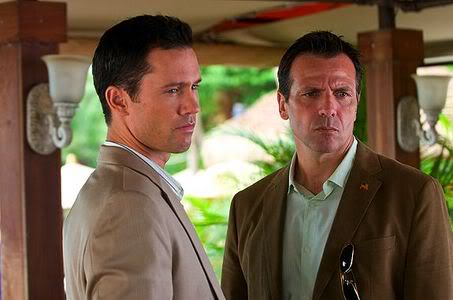[mythopoesis: the making of myths or fantasy]
 There is some magic that lies in names which gives one a deep sense of satisfaction. A name can be called a label of identity, for it helps in some fashion to describe its possessor. In many folklore traditions, names have power. Even the seemingly ordinary name might carry a weight of significance. Any Sub-Creator should be aware of these points when he begins the process of naming his creatures, for the magic of names may reach up and entangle him in unforeseen problems and possibilities.
There is some magic that lies in names which gives one a deep sense of satisfaction. A name can be called a label of identity, for it helps in some fashion to describe its possessor. In many folklore traditions, names have power. Even the seemingly ordinary name might carry a weight of significance. Any Sub-Creator should be aware of these points when he begins the process of naming his creatures, for the magic of names may reach up and entangle him in unforeseen problems and possibilities.
In The Language of the Night (G.P. Putnam’s Sons, 1979), Ursula K. LeGuin mentions the process of naming while discussing her Earthsea books:
For me, as for the wizards, to know the name of an island or a character is to know the island or the person. Usually the name comes of itself, but sometimes one must be very careful: as I was with the protagonist, whose true name is Ged. I worked (in collaboration with a wizard named Ogion) for a long time trying to “listen for” his name, and making certain it really was his name …. If the name had been wrong the character would have been wrong – misbegotten, misunderstood.
A Man who read the ms, for Parnassus though “Ged” was meant to suggest “God”. That shook me badly. I considered changing the name in case there were other such ingenious minds waiting to pounce. But I couldn’t do so. The fellow’s name was Ged and no two ways about it. (p. 52)
In these two paragraphs, LeGuin brings out four points about the process of naming: the relationship between knowing a character’s name and knowing the character, that proper names are gained by careful attention or “listening”, that a reader can easily have a mistaken assumption as to the name’s “meaning”, and that a character will often insist on keeping his proper name. Each of these points is something a Sub-Creator ought to consider when he begins to assign names to both people and places.
In folklore there are many references to magic attached to names. Sometimes it is said that knowing the true name of a person or object gives one power over that person or object. In a sense this is true for the Sub-Creator, for as long as a character is known to the author only as “the Hero who carries the Green Sword and kills the Water Dragon”, not much will be known about him. The moment the character acquires a name, however, the author may discover any number of things about the character.
The Sub-Creator must be careful about bestowing a name upon a character. The Proper Name can be a great source of satisfaction, but it cannot simply be contrived. There are many things which can affect the choice of names, but none of them are idle. In a letter printed in The Letters of J.R.R. Tolkien (Houghton Mifflin, 1981), Tolkien observed “I do not think that an inventor catches noises out of the air” (p. 375). There is usually some sort of appeal in the name for the author. LeGuin observes of the Earthsea names that
… three small islands are named for my children, their baby names …. None of the other names “means” anything that I know of, though their sounds is more or less meaningful to me. (LN, p. 51)
Indeed, the call of “meaning” in names is very powerful, and many readers pursue this elusive butterfly far afield from the Sub-Creator’s world. Many an author has had to endure mistaken assumptions similar to that expressed by LeGuin’s reader. Tolkien, in another letter, points out the problem for the author on this matter.
Investigators, indeed, seem mostly confused in mind between (a) the meaning of names within, and appropriate to, my story and belonging to a fictional ‘historic’ construction, and (b) the origins or sources in my mind, exterior to the story, of the forms of these names. As to (1) they are of course given sufficient information, though they often neglect what is provided. (LT, p. 380, emphasis Tolkien’s)
Yet, admittedly, readers will continue to pursue the “meaning” of names and there is little an author can do about the situation, aside from flat out stating what the name meant to him.
It is perhaps this underlying but unexplainable “meaning” hiding in the name which occasionally surprised the Sub-Creator. As LeGuin observes, when she contemplated changing Ged’s name, she found it impossible. Not only was it the Proper Name, but the character had laid claim to it. The Sub-Creator can easily find himself dealing with characters who refuse to give up their Proper Names, but also with characters who will refuse to accept or acknowledge ill-chosen names.
In Genesis, Adam is given the challenge and delight of naming the creatures of the world, but we are given no stories of how the names came to him nor how long it took him to complete the naming process. For the Sub-Creator, the bestowing of names echoes that Edenic chore, but roughly and uneasily. In one case the author may say “But of course his name is Ap l’Don!”, while in another, a character may maintain a lengthy, shadowy elusiveness until the author trips over the name one day. Either way, when the author learns a character’s name, it is for him a bit like being personally introduced to a new friend.
“What’s in a name?” Juliet asked the night. She might think it a small matter, a mere few sounds. But Shakespeare knew what hid in names. It is after all the weight of two family names, their power and poison, which kills the young lovers. Any Sub-Creator would do well to remember that.
first published in Mythlore 38, 1984) (revised 2006)




 Human beings are born in time, live in time and, in time die. The whole of our lives is spent with the flow of time, and so it is only natural that we tend to think of the history of things in a straight chronological and sequential order. Yet, when it comes to the matter of mythopoesis, if we remain locked in such habits of thought, we shall become lost. The history of a fantasy world rarely comes to its author in a chronological fashion: that is, the author rarely begins at the beginning and goes on to the end. He usually begins, like Tolkien’s Niggle, with a single leaf, and in going on, finds that there are branches, other leaves, trunk and roots to be accounted for.
Human beings are born in time, live in time and, in time die. The whole of our lives is spent with the flow of time, and so it is only natural that we tend to think of the history of things in a straight chronological and sequential order. Yet, when it comes to the matter of mythopoesis, if we remain locked in such habits of thought, we shall become lost. The history of a fantasy world rarely comes to its author in a chronological fashion: that is, the author rarely begins at the beginning and goes on to the end. He usually begins, like Tolkien’s Niggle, with a single leaf, and in going on, finds that there are branches, other leaves, trunk and roots to be accounted for.
 Madeline Westen is expert at wielding emotional blackmail over Michael — which works because at rock bottom, Michael is a good guy and does love his mother. Madeline also serves to show that although Michael may be officially a non-person, he also needs to relearn how to be a real person, with a real (ie, emotional) life.
Madeline Westen is expert at wielding emotional blackmail over Michael — which works because at rock bottom, Michael is a good guy and does love his mother. Madeline also serves to show that although Michael may be officially a non-person, he also needs to relearn how to be a real person, with a real (ie, emotional) life. Fiona’s “official” position is “not his girlfriend.” Except that she is his ideal partner. The ups and downs of their relationship ring true, for they are dealing with real issues: the nature of Michael’s old job, what that job requires of his character, how to accommodate another person deeply into your life.
Fiona’s “official” position is “not his girlfriend.” Except that she is his ideal partner. The ups and downs of their relationship ring true, for they are dealing with real issues: the nature of Michael’s old job, what that job requires of his character, how to accommodate another person deeply into your life. It’s a new problem in Michael’s way, which he removes over the course of a few episodes by creating the appearance that the overseer has been compromised. This leads to the mysterious organization that burned him revealing itself slightly.
It’s a new problem in Michael’s way, which he removes over the course of a few episodes by creating the appearance that the overseer has been compromised. This leads to the mysterious organization that burned him revealing itself slightly. She tells him she helped burn him in order to recruit him to the secret organization she serves. She sets Victor to “manage” Michael.
She tells him she helped burn him in order to recruit him to the secret organization she serves. She sets Victor to “manage” Michael. Victor is like Michael (ie, burned), “but with rabies” (according to Sam Axe, Michael’s friend and sidekick). Michael transforms Victor from opponent to ally and the pair remove Carla, forcing the organization’s Management to reveal himself. Michael is offered better conditions in the organization, under the threat of removal of their protections (from enemies and authorities).
Victor is like Michael (ie, burned), “but with rabies” (according to Sam Axe, Michael’s friend and sidekick). Michael transforms Victor from opponent to ally and the pair remove Carla, forcing the organization’s Management to reveal himself. Michael is offered better conditions in the organization, under the threat of removal of their protections (from enemies and authorities).
